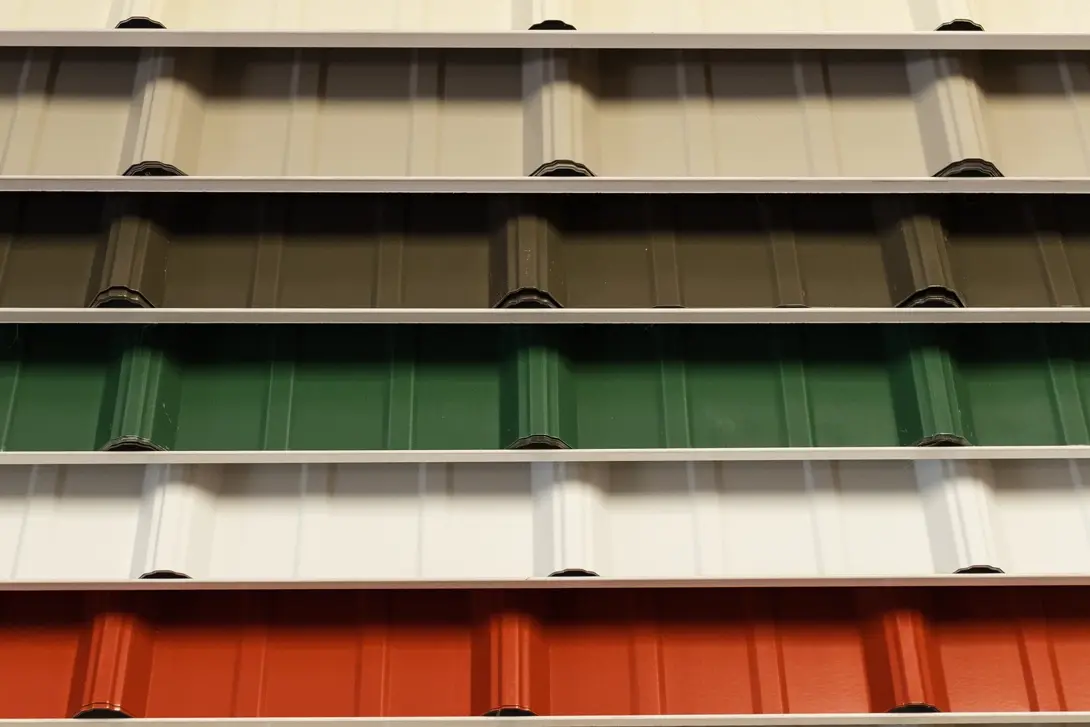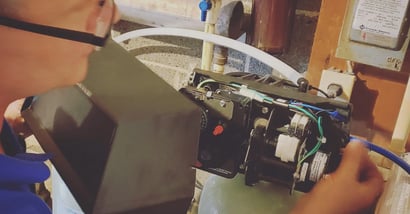If you want to flourish in 2024, it isn’t enough to be resilient. Your business needs to be anti-fragile.
We know there are obstacles ahead; some we can see coming, some that we can’t. And we believe, like those in the “anti-fragile” camp, that you can do more than “weather the storm” – we believe those obstacles can make you stronger.
In this article:
Tips for the Anti-fragile business
- Diversity in everything
- Experiment small and often
- 2nd order thinking
- Capacity over efficiency
- Be driven by data, not instinct
- Working closely with vendors and partners
What is Anti-Fragililty?
To be antifragile (a word coined by Nassim Taleb in his book “Antifragile”) means you and your business become stronger through adversity, mistakes, stressors, and the challenges that are thrown your way. It means you have the agility, adaptability, and willingness to experiment that allows you to turn obstacles into opportunities for growth. We teamed up with Scott Carline, President and Owner of AxleBoy Offroad, to do a deeper dive on how to build an “anti-fragile” business and how this mindset can help business owners and their companies to thrive, especially when the pressure is on.
As a company that specializes in upgrading and upfitting Jeeps, Axleboy, like most of you, had to quickly adapt when the “just-in-time" supply chain went haywire in 2020, to a consumer mentality shift of every day travel to travel as a hobby, and now to the reverse change as the world has re-opened and inflation and expenses are driving down spending on things people don’t see as truly necessary.
Scott had two options: hunker down and hope to weather the storm or use the difficulty and make the challenges work for him. He developed six key principles that have helped Axleboy to thrive in the face of uncertainty.
>> To learn more about AxleBoy Offroad, visit their website, or read this additional article on how they’ve utilized Koble’s ERP to eliminate massive inventory swings.
Tips for the anti-fragile business
Diversity in everything
You’ve heard it before: don’t put all your eggs in one basket. If your entire operation is hinging on one way of doing things, your organizational equilibrium is unsteady at best. You need to make sure you’re diversifying your risk across revenue, marketing, and your talent.
- Diversify revenue streams
For revenue diversity, Scott took inspiration from Disney’s Synergy Map.
Disney built their revenue streams with the “uncertain future” in mind, building several pillars that would be strong through different times, supporting and feeding the other areas that may slow. For example, when Covid knocked out theaters, they could lean more on their merchandise sales and their streaming platforms.
Do you have different revenue streams that can step up in the event that one of them has a hard year (or many hard years)? Use multiple revenue streams as a way to anticipate changes in what your clients are asking for.
Additionally, make sure you have options for where you get your product. The pandemic exposed the vulnerabilities of just-in-time supply chains. Concepts like LEAN work great when the infrastructure is there, but if there’s a break in system then you’re left with nothing to sell. So establish secondary and tertiary supply chains to take the edge off future disruptions. - Diversify Marketing
Diversity in marketing is also incredibly important. It allows you the opportunity to experiment and get ahead of the game if one of your marketing avenues starts to fail or lose traction. For example, search engines are notorious for changing their rules and algorithms on a dime, and without variety of marketing avenues those changes can dramatically disrupt your visibility to prospects. - Diversify Talent
A variety of ideas in your organization can help you creatively problem solve instead of getting stuck in an echo chamber. By diversifying talent and embracing the healthy conflict of differing opinions, you’ll gain deeper and broader understanding of the work you do. If you only hire people with similar experience or ideas that line up exactly with yours, you’ll find you all get stuck at the same obstacles. (Of course this only works if you empower decision makers at all levels of your organization.)
The Caveat: Like everything, moderation is a key factor! If you put your eggs in 100 baskets, you can’t put much energy into any of them. (Reference “The Paradox of Risk” from James Clear, author of Atomic Habits)
Experiment small and often
Experimentation is the best way to discover new products, services, and strategies that can propel your business forward.
But innovation doesn't happen in a vacuum - it's born out of trials, failures, and a willingness to learn from mistakes. Don't let the fear of failure hold you back. Instead, embrace it as an opportunity to grow and become stronger.
Here are some key takeaways for embracing experimentation:
- Accept that failure is inevitable. A lot of your new ideas will fail, so it's crucial to have a growth mindset. View failures as learning opportunities, not setbacks.
- Don't bet the farm on every new idea. Prioritize small, low-cost experiments that can still yield valuable insights. Test your assumptions and iterate based on results.
- Embrace the power of pivoting. When an experiment doesn't pan out, don't be afraid to change course. Adaptability is essential for survival in today's dynamic business landscape.
Employ 2nd order thinking
Every time you’re about to make a decision, follow it up with “and then what?”
Second order thinking goes beyond the momentary decision, to strive to understand the long term impact of the decision. Everything you change will influence other areas of your business. You could solve the problem at hand only to create a bigger issue in another area.
The “and then what?” is an easy reminder to think beyond the surface level. Whenever Scott is considering a big decision for AxleBoy, he works through at least 2 levels of “and then what?”. Scott learned this the hard way in his business: he hired some non-specialised talent for their tractor-axle department, with the plan to train each person in one area of service for the line. It worked well for a while, but as time went on, the lack of cross-training started resulting in failed axles. Because each person only knew their one area of work, like assembly vs disassembly, they couldn’t help solve issues outside of their specific area.
Everyone knew what they were doing, but didn’t know why they were doing it. Their training didn’t cover the bigger picture. Scott realised that if he had used second order thinking from the beginning, he could have anticipated the need for deeper training so that his employees would have the understanding they needed to problem-solve more effectively.
Prioritize Capacity over efficiency
Capacity and efficiency are not the same thing. Capacity embraces expansion and growth, while the main goal of efficiency is only to streamline and conserve. When you want to increase your capacity, you figure out how to do more with what you have. Being "efficient” means you’re just trying to do the same as you always have, but cutting out resources. A growth mindset doesn’t focus on what you can cut out, but rather on what you can expand and develop.
Be driven by data, not instinct
Accurate and reliable data is the fuel for the antifragile engine. This is where ERP software shines, allowing you to track key performance indicators (KPIs) effectively. When the numbers accurately reflect where your business is at and you’re not left to guess and assume, you can make decisions more confidently - even in an uncertain landscape. You are also able to build a tight feedback loop for experiments – with the right data you can track how your experiment is doing, and whether or not it has been a success.
In addition to tracking KPIs, it’s good for you to know your leading indicators. These provide valuable forecasts of future trends. For AxleBoy, new vehicle sales in the industry is a big one. If Jeep and truck sales are strong, custom work is likely to follow. They also watch local enthusiast clubs and events to give them an idea of the community's demand.
Once you've gathered your data, analyze it in various ways: graphs, overlays, timelines, and more. Share the insight with your team, and use it to guide you as you pursue your company goals. What actions, outcomes, and behaviors do you need to see, and how can you use good, actionable data to encourage that?
Work closely with your vendors and partners!
Think of your vendors and partners as extensions of your own team, each bringing unique strengths and expertise to the table. Together, you can spot risks before they become crises, adapt to changing markets faster, and even innovate new solutions that wouldn't have been possible solo.
Share insights, collaborate on solutions, and build unshakeable trust. This united front turns challenges into opportunities, keeps customers loyal, and creates a solid support system for when the market throws curveballs.
For Koble clients, make it a point to talk to your account manager regularly to discuss challenges and goals. Present issues to the solutions team. When you work with Koble, you have both the tools and the support you need to gain momentum.
In review
Like our friends at AxleBoy Offroad, by adopting an anti-fragile mindset through continuous learning, adaptation, and a willingness to experiment, you can build a business that thrives in the face of adversity.
So start small, take calculated risks, and learn from your mistakes.
In a world that is quick to come up with excuses, you’ll be able to turn those excuses into opportunities for success, and build your business to last.

Kelsey Stout is the Head of HR & Marketing at Koble. She loves helping people build strong and lasting businesses with meaningful work, the right systems in place, and a strong approach to culture. When not telling Koble stories, Kelsey can be found writing children's fiction, spending time with family, or playing the guitar (poorly but enthusiastically).






